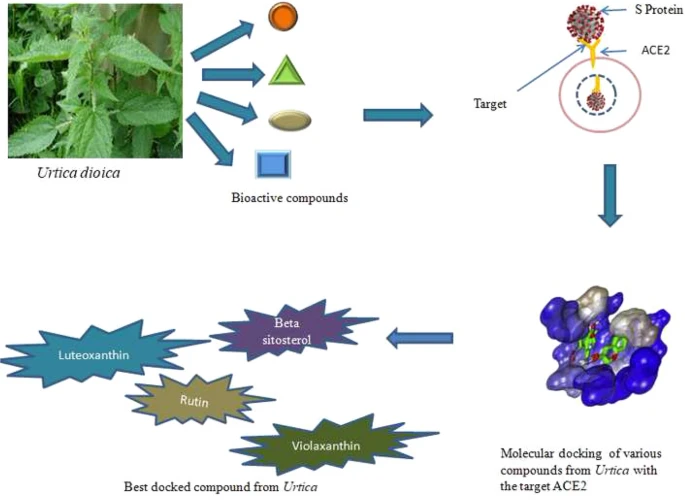Ginger will not destroy the virus in your body or stop the copying process.
theaflavin-3-3'-digallate
Ginger extract inhibits LPS induced macrophage activation and function
mRNA – or messenger RNA – is a molecule, composed of nucleotides linked in a unique order to convey genetic information for the cells to produce the proteins or antigens encoded by the mRNA.
In addition ginger extract negatively affected the antigen presenting function of macrophages and we observed a significant reduction in T cell proliferation in response to allostimulation, when ginger extract treated macrophages were used as APCs.
Helper T-cells stimulate B-cells to make antibodies
in the absence or presence of ginger extract for 24 h.
Impressive!
Ginger is known to be anti-inflammatory in nature but its mechanism of action is not completely known. Our study for the first time shows the mechanism by which ginger exerts its anti inflammatory effects on macrophage and T cell activation. Ginger extract not only inhibits proinflammatory cytokine production by macrophages but also decreases IFN-γ production, the key pro inflammatory mediator, by T cells.
So anyone cite this?
No mention of ginger binding to Ace2 either?
Oh this is 13 years ago!
Overall, the findings suggest that the ginger compound’s anti-inflammatory activity directly affects autoantibodies related to illnesses such as lupus and APS.
Importantly, regardless of whether the mice had APS or lupus, there was a reduction in autoantibodies. This result indicates that the ginger compound might break the cycle of inflammation and potentially work as a treatment.
https://www.medicalnewstoday.com/articles/could-ginger-ease-lupus-symptoms
Wow - January 21 - just a couple weeks ago!!
Turns out Stinging Nettle ALSO binds to ACE2!!
theaflavin 3,3'-digallate a phenolic compound present in ginger, was found to interact both with ACE2 receptor...with considerable binding affinities. theaflavin 3,3'-digallate can directly bind to both host
cell target ACE2 receptor and viral target main protease,ACE2 mediates SARS-CoV-2 infection. Entry into host cells is the first step of viral infection.ACE2 was identified as the viral binding site less than two months after the first case reports of COVID-19,
Wow it's found in BLACK TEA also!!
We have observed that many compounds from the plant Urtica have shown better results than the reference drug molecule chloroquine phosphate.
Hilarious!!
https://papers.ssrn.com/sol3/papers.cfm?abstract_id=3695034
Theaflavin monogallate (TFMG) or Theaflavin-3-gallate
https://www.sciencedirect.com/science/article/pii/S2225411020304788
Another interesting research investigated the SARS-CoV 3CLPRO
inhibitory effects of black, Pu’er, green and oolong teas. The authors
concluded that tannic acid, 3-isotheaflavin-3-gallate (TF2B), and
theaflavin-3,30-digallate (TF3) were potent SARS-CoV 3CLPRO inhibitors,
and that the black and Pu’er teas were more potent at their
inhibitory properties than the green and oolong teas.
https://www.ncbi.nlm.nih.gov/pmc/articles/PMC7773841/
In addition, theaflavin-3-gallate could inhibit protein expression of ACE2 and TMPRSS2 without significant cytotoxicity. Our results suggest that GB-1 and theaflavin-3-gallate could act as potential candidates for prophylaxis or treatment of SARS-CoV-2 infection through inhibiting protein expression of ACE2 and TMPRSS2 for the further study.
Results
Recent studies have revealed the possible binding sites present on SARS-CoV-2 and studied their interactions with tea polyphenols. EGCG and theaflavins, especially theaflavin-3,3′-digallate (TF3) have shown a significant interaction with the receptors under consideration in this review. Some docking studies further emphasize on the activity of these polyphenols against COVID-19.
https://onlinelibrary.wiley.com/doi/full/10.1002/ddr.21730
Epigallocatechin gallate and theaflavin
gallate interaction in SARS‐CoV‐2 spike‐protein central channel with
reference to the hydroxychloroquine interaction: Bioinformatics and
molecular docking study
theaflavin gallate demonstrated higher atomic contact energy (ACE) value, binding energy, Ki value, ligand efficiency, surface area and more amino acid interactions than hydroxychloroquine (HCQ) during binding in the central channel of the spike protein. Moreover, out of three distinct binding sites (I, II and III) of spike core when HCQ binds only with site III (farthest from the nCoV‐RBD of ACE2 contact), epigallocatechin gallate and theaflavin gallate bind all three sites.
AND another study!
https://www.hindawi.com/journals/ecam/2020/5630838/
Theaflavin is an active ingredient of black tea, a fermented or oxidized form of green tea [22]. Theaflavin also showed antiviral activity against influenza virus, herpesvirus, rotavirus, and coronavirus [23–25].
Overall, the affinity of our several selected drugs toward the viral spike protein was observed to be very high. The highest value was observed for TFDG (−465.17) followed by TFMG (−434.42) and epigallocatechin 3‐gallate (−407.58). In contrast, HCQ was observed with ACE value of −293.32.
Effects of Ginger on clinical manifestations and paraclinical features of patients with Severe Acute Respiratory Syndrome due to COVID-19: A structured summary of a study protocol for a randomized controlled trial
https://pubmed.ncbi.nlm.nih.gov/33036662/




No comments:
Post a Comment